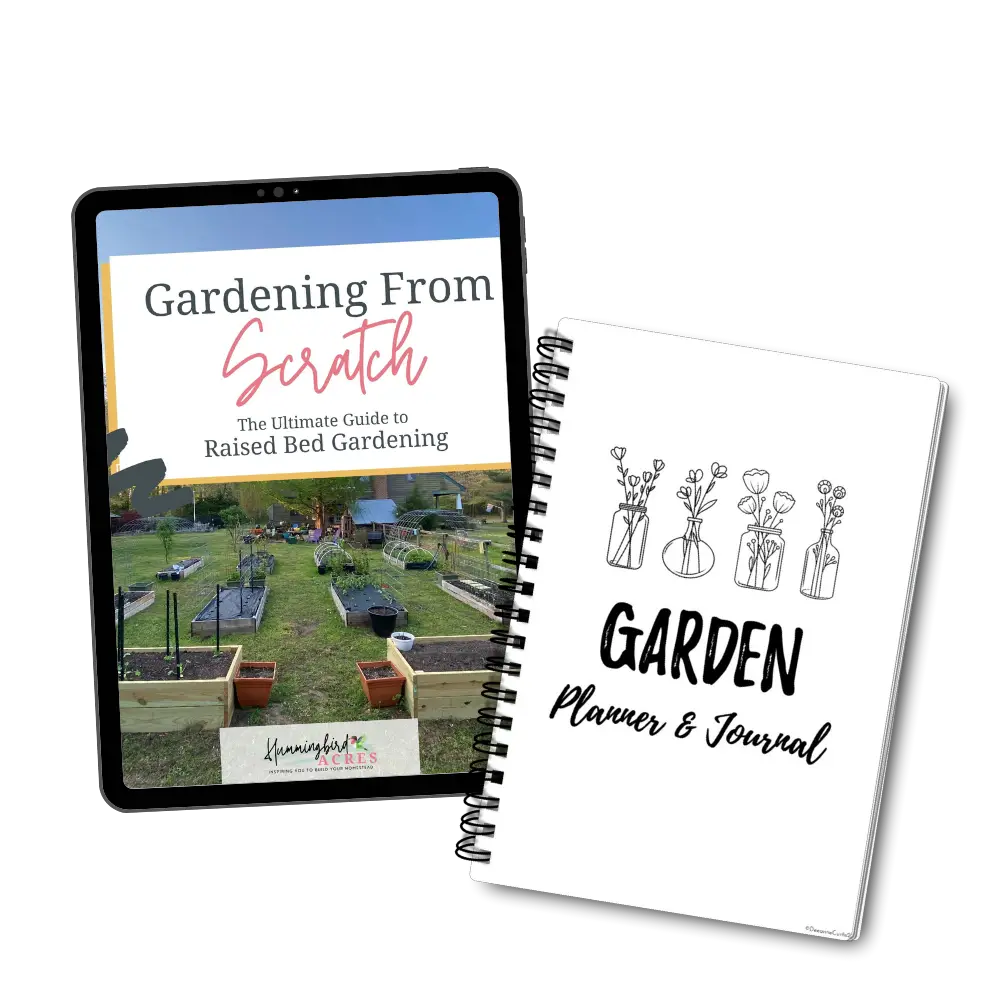Start a Tomato Garden
Tomatoes are the most popular vegetable to grow! And when first starting out a tomato garden is where everyone wants to start. Whether you grow them for canning (like I do) or for fresh eating, a bumper crop of tomatoes can make any gardener feel like a pro.
How do we get that bumper crop? Though we can’t control the yearly nemeses of weather, disease, and pests, getting our tomato plants off to a good start gives them the best advantage.
The trick to growing great-tasting tomatoes is to choose the best varieties, start the plants off right, and control problems before they happen. Start here with some time-tested tomato growing tips to ensure your tomato bragging rights this year.
Disclosure: Some of the links below are affiliate links, meaning, at no additional cost to you, I will earn a commission if you click through and make a purchase.
Choose the Right Variety for your Tomato Garden
From giant beefsteaks to tiny cherries, tomatoes come in a lot of shapes, sizes, and colors. While some of it comes down to climate (ask your local garden center or cooperative extension service for advice) and personal preference, there’s one key difference every gardener should know: determinate and indeterminate tomatoes.
Determinate (or bush) tomatoes tend to fruit over a two-week period and then stop, making them great for canning. They’re also more compact, which means they’re a smart choice for container gardens.
Indeterminate tomatoes increase in height throughout the growing season because the terminal of the stem continues to produce foliar growth rather than set flowers. Therefore they grow longer vines and produce more flavorful fruit all season long. Most common varieties fall into this category, including heirlooms. Indeterminate tomatoes are the choice if you want to spread out the harvest over a longer period of time.
The choice also depends on how you will use this verstaile fruit in the kitchen. For example, Roma tomatoes are not very good eaten fresh, but are well suited for sauces and ketchups.
Tomato gardens do need vigilant care, as the crop is susceptible to pests and diseases. To avoid problems, choose disease-resistant cultivars whenever possible. Also, note that tomato plants will be more susceptible to soil-borne disease and rot if not kept off the ground with a stake or other support system. We’ll cover all these essentials in the tomato guide below.
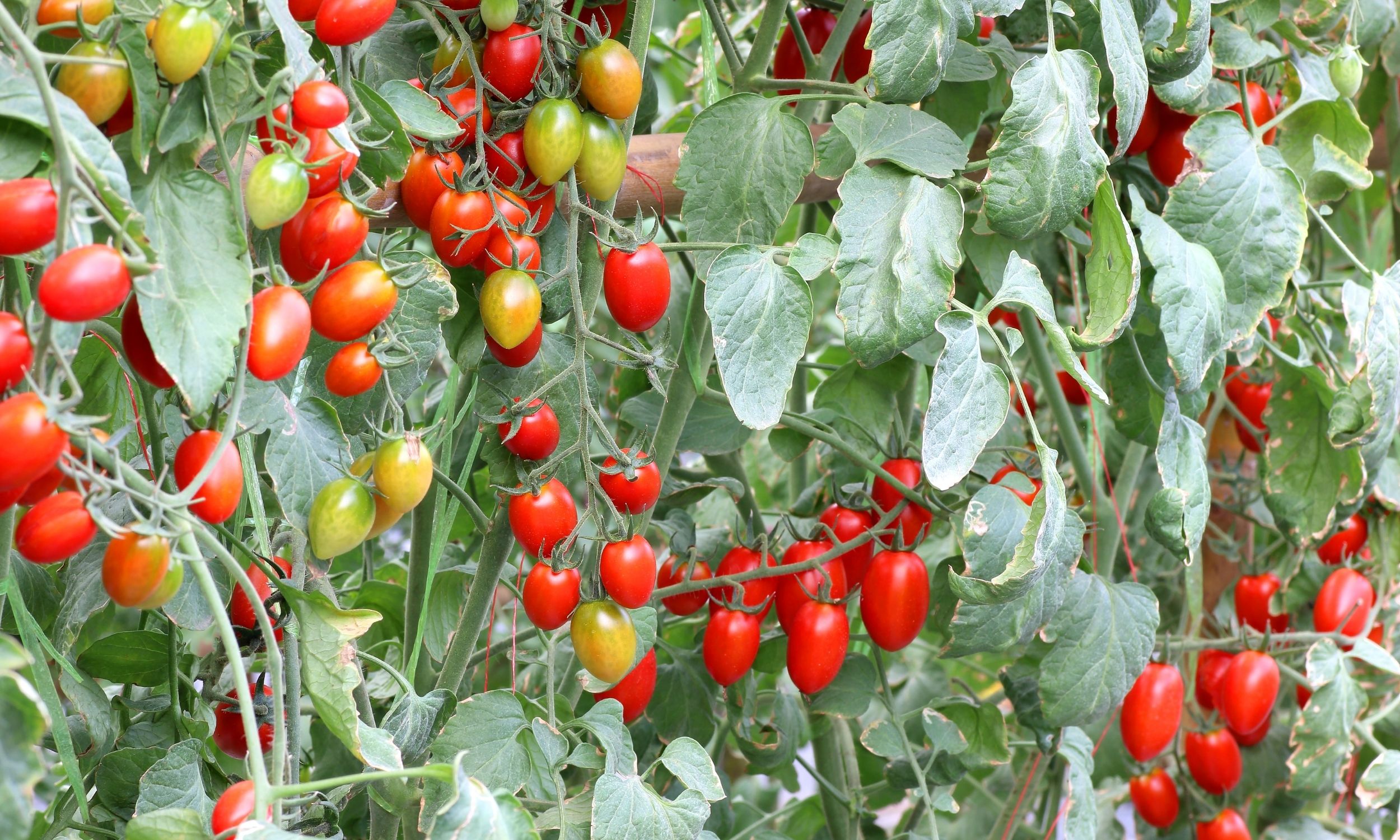
Where to Plant
Select a site with full sun. For northern regions, it is VERY important that your site receives at least 6 hours of daily sunlight. For southern regions, light afternoon shade will keep tomatoes protected from the harsh midday sun and help them thrive.
Tomatoes will grow in many different soil types, but it needs to drain well and never pool water. They prefer a slightly acid soil with a pH of 6.2 to 6.8.
When to Plant your Tomato Garden
Many gardeners start tomatoes from small plants or transplants that you purchase in the nursery as they are not the easiest for beginners to start by seed.
However, if you grow tomatoes from seed, start indoors 6 to 8 weeks before the average last spring frost date. Plant them 1/4 inch deep and 1 inch apart in flats placed in a warm, sunny room. Once the seedlings grow their second set of leaves (the first true leaves), transplant them to plastic cups, burying the stems deeper than before. This encourages a strong root system.
If you’re buying transplants from a nursery, you’ll also want to let them develop a solid root system before planting. Wait until the temperature stays consistently warm before putting plants in the ground.
After the danger of frost has passed. A spring frost will kill tomatoes (temps below 40 degrees with no wind and no cloud cover). Young tomato plants will not thrive in low temps they prefer temps above 50 degrees. By waiting to transplant you are giving your tomatoes a better start.
You may need to look at a tomato variety that can be harvested quicker if your growing season is shorter. If you start tomatoes indoors they might get leggy and need to be transplanted to a bigger container or into the garden sooner.
Before Transplanting
- Two weeks before planting your tomato plants outdoors, dig into soil about 1 foot deep and mix in aged manure or compost.
- Harden off seedlings or transplants for a week before planting in the garden. Set young plants outdoors in the shade for a couple of hours the first day, gradually increasing the amount of time the plants are outside each day to include some direct sunlight.
- Place tomato stakes or cages in the soil at the time of planting to avoid damaging roots later on. Staking keeps developing tomato fruit off the ground, while caging lets the plant hold itself upright.

Shhh… don’t tell!!
5 Secrets to Starting a Garden
Enter your name & email so we can send your our FREE Guide.
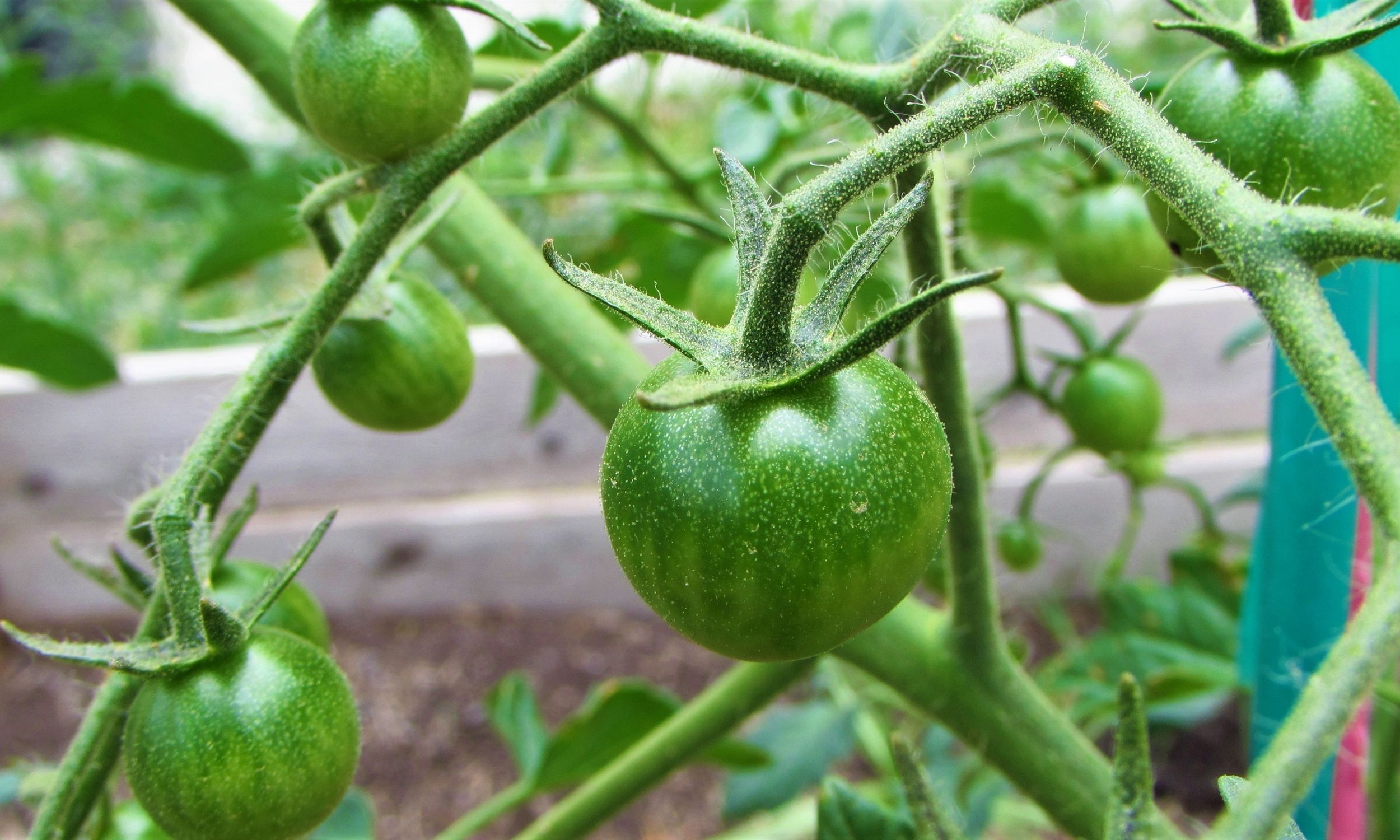
Planting the Seedlings
The supplies you need
- Small shovel
- Organic fertilizer to put in the planting hole to give the plant a good start.
- Crushed eggshells. Rinse and blend, pulverize to they are fine. Eggshells will provided extra calcium.
- Watering can with water
- Empty toilet paper rolls cut into thirds. Put them around the stem to prevent cutworms
- Tomato transplants
How to Plant
- Dig bigger holes than you think you’ll need at least 2 feet apart, setting the plants so that the lowest set of leaves sit at soil level. Tomato plants like to be planted deep. If your transplants are leggy, you can remedy this by burying up to ⅔ of the plant, including the lower sets of leaves. Some gardeners will bury almost the entire plant since new roots will sprout on the stem that is covered in dirt and lead to more fruit.
- Hand full of fertilizer and a little big of egg shells. Fill it about ½ way up with water.
- Then add tomato.
- Back fill with soil
- Loop toilet paper roll around stem. Snip the roll vertical and loop around. Push the roll down so that half is in the soil
- Water your plant. Soak with water but don’t drown them.
- Stake them! Stake them early before the roots have times to spread so you don’t disturb the roots. Stake within a week
How far apart they need to be planted
- 2-3 feet apart.
- The closer the plants are the more sepeiable they will be to disease. In warmer wetter climates aim for 3 feet apart.
- Planting in double rows- 2 rows closer together with a wider path. The plants are staggered in a zig zag pattern
- Space tomato transplants 2 feet apart for small bush-type plants or larger plants that will be staked. Space larger plants 3 to 4 feet apart if unstaked. Allow 4 feet between the rows.
Growing Tomatoes in Containers
- Use a large pot or container with drainage holes in the bottom.
- Use loose, well-draining soil. We recommend a good potting mix with added organic matter.
- Plant one tomato plant per pot. Choose from bush or dwarf varieties; many cherry tomatoes grow well in pots.
- Taller varieties may need to be staked.
- Place the pot in a sunny spot with 6 to 8 hours of full sun a day.
- Keep soil moist. Containers will dry out more quickly than the garden soil, so check daily and provide extra water during a heatwave.
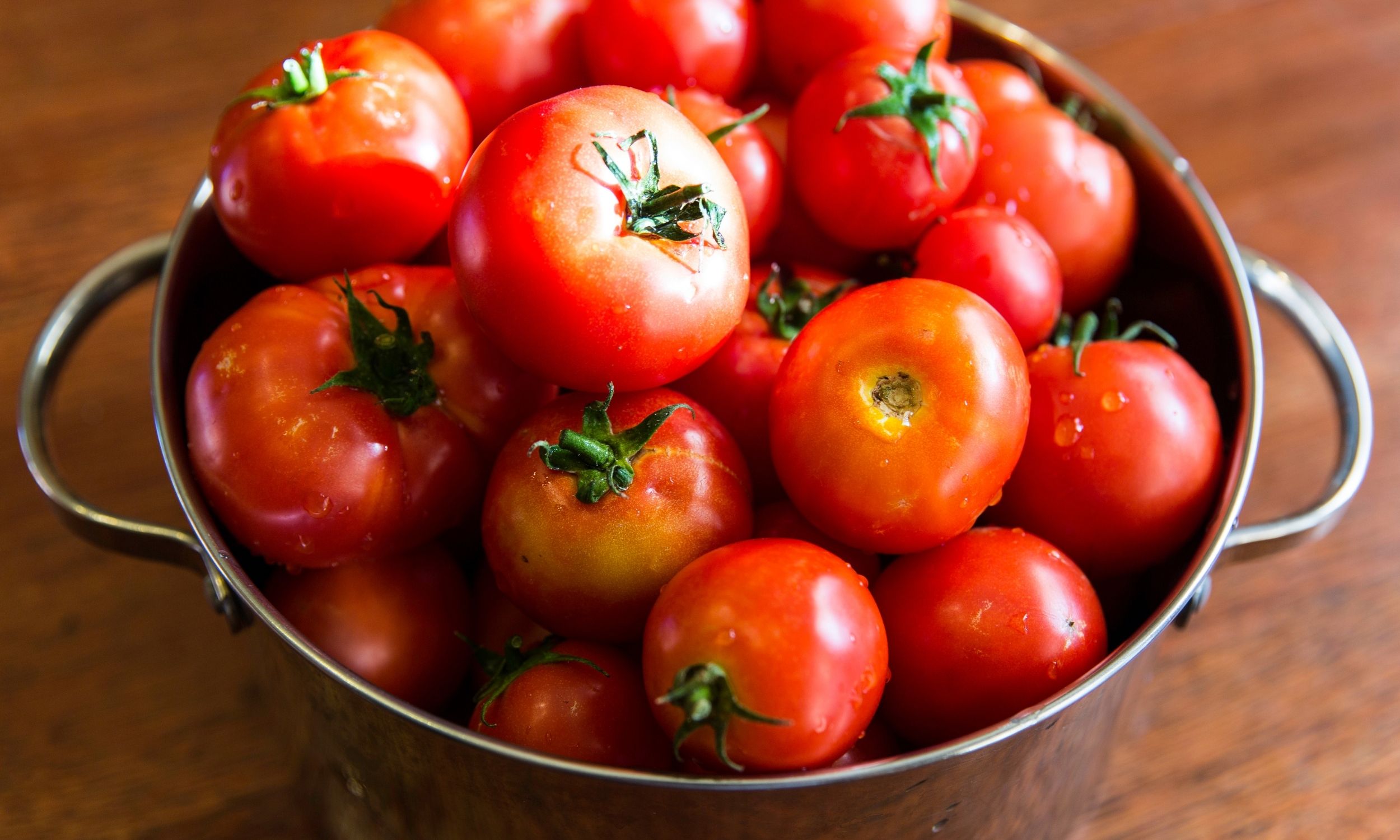
Staking/Caging Tomatoes
Suggestions on staking, and the ONLY time I recommend using round tomato cages
- Round tomato cages- NO NO these only work for cherry tomatoes
- Florida Weave- not good for indeterminate unless you have taller stakes
- If staking, use soft string or old nylon stocking to secure the tomato stem to the stake. It’s essential to remove the suckers (side stems) by pinching them off just beyond the first two leaves.
- If supporting tomatoes with a wire cage, suckers do not need to be removed. (This allows the plant to be more productive.)
Why you should mulch, but not right away
Mulch is super important. Deter diseases in the soil that will splash up on the leaves. Wait and mulch until the temp is in the 70s. Mulch helps regulate the soil moisture.
Caring for Tomatos
Watering
- Water generously the first few days that the tomato seedlings or transplants are in the ground.
- Water well throughout the growing season, about 2 inches (about 1.2 gallons) per week during the summer. Water deeply for a strong root system.
- Water in the early morning. This gives the plant the moisture it needs to make it through a hot day. Avoid watering late afternoon or evening.
- Mulch also keeps soil from splashing the lower tomato leaves. Apply 2 to 4 inches of organic mulch such as straw, hay, or bark chips after the soil has had a chance to warm up.
- To help tomatoes through periods of drought, find some flat rocks and place one next to each plant. The rocks prevent water from evaporating from the soil.
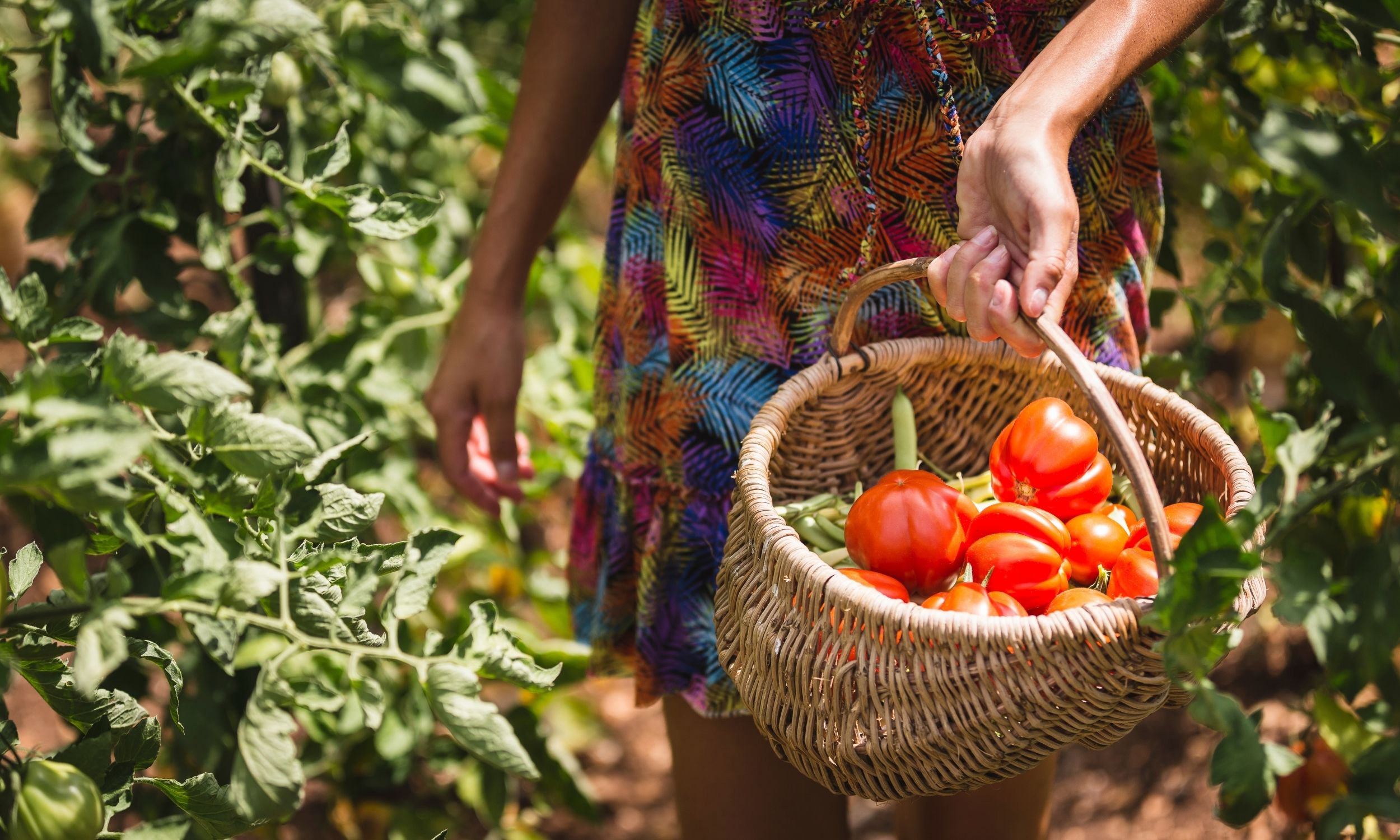
Fertilizing
- Watering in with a starter fertilizer solution will help get the roots off to a good start.
- Side dress plants with fertilizer or compost every two weeks starting when the tomato fruits are about 1 inch in diameter.
- A sidedressing of nitrogen fertilizer will help see the plants through the growing season. Apply 1 pound of ammonium nitrate (33-0-0) per 100 foot row at each of the following times:
- 1 to 2 weeks after first fruits are set
- 2 weeks after picking first ripe fruit, and
- 6 weeks after picking first ripe fruit.
- Practice crop rotation from year to year to prevent diseases that may have overwintered.
Weeding
Where no mulch is used, cultivate shallowly to remove weeds while they are still small. Herbicides can be used in large tomato plantings but are not practical in the small garden with only a few plants of many different crops.
Pest & Disease
Tomatoes are susceptible to insect pests, especially tomato hornworms and whiteflies.
- Aphids
- Flea Beetles
- Tomato Hornworm
- Whiteflies
- Blossom-End Rot
- Late Blight is a fungal disease that can strike during any part of the growing season. It will cause grey, moldy spots on leaves and fruit which later turn brown. The disease is spread and supported by persistent damp weather. This disease will overwinter, so all infected plants should be destroyed.
- Mosaic Virus creates distorted leaves and causes young growth to be narrow and twisted, and the leaves become mottled with yellow. Unfortunately, infected plants should be destroyed (but don’t put them in your compost pile).
- Cracking: When fruit growth is too rapid, the skin will crack. This usually occurs due to uneven watering or uneven moisture from weather conditions (very rainy periods mixed with dry periods). Keep moisture levels constant with consistent watering and mulching.

How to Harvest
Leave your tomatoes on the vine as long as possible. If any fall off before they appear ripe, place them in a paper bag with the stem up and store them in a cool, dark place.
Never place tomatoes on a sunny windowsill to ripen; they may rot before they are ripe!
The perfect tomato for picking will be firm and very red in color, regardless of size, with perhaps some yellow remaining around the stem. If you grow orange, yellow or any other color tomato, wait for the tomato to turn the correct color.
If your tomato plant still has fruit when the first hard frost threatens, pull up the entire plant and hang it upside down in the basement or garage. Pick tomatoes as they ripen.
Make sure you harvest seeds from your tomato plants so that you can plant more next year.
How to Store Tomatos
Never refrigerate fresh tomatoes. Doing so spoils the flavor and texture that make up that garden tomato taste.
To freeze, core fresh unblemished tomatoes and place them whole in freezer bags or containers. Seal, label, and freeze. The skins will slip off when they defrost.
I know that was a lot of information about tomato gardens and you probably never knew that tomatoes can be that involved. The thing to remember is to take it one step at a time. As Jamie always says it starts with ONE!! Pick one thing and start once you have that down move on to the next. When it comes to gardening and growing your own food the rewards will outweigh all the hard work put in.
You may also enjoy these related articles:
- Grow Butterfly Weed for a Beautiful Butterfly Garden
- Plants for Butterfly Gardens: Attract More Butterflies to Your Yard with These Beautiful Flowers
- Plan Your Own Butterfly Garden: A Beginner’s Guide
Did you enjoy this article? Want to hear more? Stay in touch! Sign up below to receive weekly tips and inspiration for your homestead.
